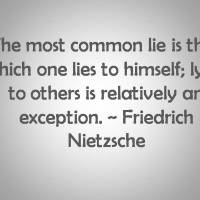Fibonacci
Author: Keith Devlin, PhD
Publisher: Walker & Company
Genre: Math History
Length: 183 pages
Swirl by Swirl – a child’s picture book – is where it started. We checked it out from the library once, then twice, and finally again and again. It’s about the Fibonacci sequence found in so many spirals in our natural world. We love it. Of course, it has a bit in the back about the Fibonacci sequence and the math involved, and that’s cool too, something to instill in young minds so that the re is familiarity with the topic before they begin Algebra in their tweens.
re is familiarity with the topic before they begin Algebra in their tweens.
Of course, at some point I picked up The Pythagorean Theorem, and there Posamatier mentions Ptolemy and his great work The Algamest as well as Fibonacci’s Liber Abaci. Naturally, I requested these at my local library. “There’s a book about Fibonacci called The Man of Numbers that’s here if you want to read that while you wait for the others to come in,” she told me. Yes, yes, I would like to read that while I wait for the others.
I checked it out.
I ended up starting and finishing it, however, in one sitting while my kiddo made use of the sixty minute literacy computer session I allow her if she’s been good prior to coming to the library that day. It was good. Quick. Informative. And of course, just made me want Liber Abaci even more.
Devlin gives you all the necessary history in the concise nature of a mathematician. He even laments how most mathematicians are concerned about the math and the theorems and not necessarily who originally came up with them or their history, causing much of the history surrounding mathematical ideas to be lost or misconstrued. Who cares? It’s about the numbers.
I care. Historians care. We don’t care as much about the numbers as we do about the theory, the philosophy… we care about math’s heritage more than the practice of being all mathy. At least that’s how I feel. I’ll leave number crunching to my husband and daughter – I’ll just be able to tell them who came up with that particular way to crunch.
With all this caring comes the discovery that Fibonacci’s name wasn’t even Fibonacci. Devlin recounts the fact that the man’s name was Leonardo and he hailed from Pisa. Leonardo Pisano, as the people of that time and culture would say. But he referred to himself as fillies Boracic, “son of Bonacci.” Yet, his father’s name wasn’t Bonacci, so people assumed he meant that he was of the family Bonacci… the Bonacci family evolved and later historian Guillaume Libri coined the name Fibonacci. Hundreds of years later. Leonardo was renamed Fibonacci in 1838.
Fibonacci also referred himself as Leonardo Bigolli… a named once translated would be “Leonardo Blockhead.” Though, Devlin asserts, it’s doubtful that Fibonacci was calling himself a blockhead.
 That brings us to our latest picture book selection… Blockhead: the life of Fibonacci. This delightful picture book was written by Joseph D’Agnese and was illustrated by John O’Brien. Even though there’s a lot we don’t know about Fibonacci’s real life or how he came to discover his mathematical findings the way he did – it’s fun to imagine what his life was like and where he might have come up with his self-proclaimed nickname “Bigolli.”
That brings us to our latest picture book selection… Blockhead: the life of Fibonacci. This delightful picture book was written by Joseph D’Agnese and was illustrated by John O’Brien. Even though there’s a lot we don’t know about Fibonacci’s real life or how he came to discover his mathematical findings the way he did – it’s fun to imagine what his life was like and where he might have come up with his self-proclaimed nickname “Bigolli.”
For good measure, we re-read Swirl by Swirl afterward and are looking forward to memorizing a few things in the upcoming months.
The first is from Brahmagupta (quoted in Devlin’s book):
“A debt minus zero is a debt.
A fortune minus zero is a fortune.
Zero minus zero is a zero.
A debt subtracted from zero is a fortune.
A fortune subtracted from zero is a debt.
The product of zero multiplied by a debt or fortune is zero.”
The second are the first ten numbers in the Fibonacci sequence: 1, 1, 2, 3, 5, 8, 13, 21, 34, 55.










Unboggle Your Mind said,
May 9, 2015 at 1:40 pm
I love this post! I’ve always been fascinated by the Fibonacci sequence.
Anakalian Whims said,
May 10, 2015 at 2:16 am
Thanks! And thanks for reading!